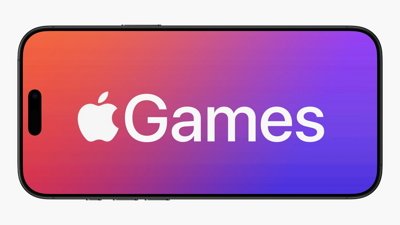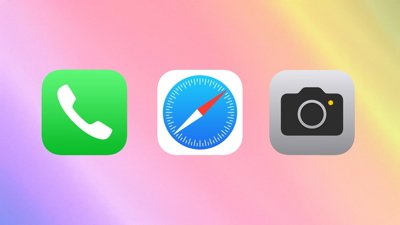No, iOS 26 isn't an operating system Apple will announce in seven years, it is potentially the new name for what's being announced in 2025. The naming convention change is going to apply across the board, so iPadOS 26, macOS 26, visionOS 26, tvOS 26, and watchOS 26.
If you've been keeping up with rumors about iOS 19, this is that same OS update. Apple is still expected to reveal a redesigned ecosystem around the visionOS paradigm, more AI tools, and new features to match.
So yes, that video above covering iOS 19 is still accurate if you swap every mention of iOS 19 for iOS 26. We'll get into the rumors for this operating system in a moment, but first, let's dive into Apple's naming conventions.
iOS 26: what's in a name?
Of course, it fundamentally doesn't matter what Apple calls its next iOS release. In fact, it doesn't really need to call it anything publicly other than "iOS."
The number slapped onto the end of the operating system name serves a purpose distinguishing between releases, but Apple turned it into a piece of marketing. However, it never seemed to stick, and iPhone users barely recognized that they were running something called iOS, let alone which number it was.
Current operating system versions:
There is a need for versioning, but with annual releases, it makes sense to address each operating system by a year. Though, there is some question behind Apple's reasoning behind calling it iOS 26 in 2025, and the answer is still tied to marketing.
When car manufacturers announce their new vehicles in the first half of the year, they don't call them by the year they are announced. That's because by the time the vehicle launches to the masses, there's very little time left in the year, and once the calendar year rolls over, that car now sounds outdated.
The same thinking can be applied to the iOS 26 naming convention. It will release to the public about a week before October 2025, so that leaves only three months of the year it'll be the "wrong year," followed by nine months of iOS 26 being the current release in 2026.
Another marketing angle could be applied to how Apple releases updates to the public. The initial launch of iOS 26 will show up as an optional update for a few weeks, then shift to being the only one available as iOS 18 is phased out.
In 2026, when users are on iOS 26, the iOS 27 release will be shown as an optional update as well. In that case, it'll appear more like you're getting access to a future version of iOS early and could help drive adoption.
Regardless, it's still the same operating system with the same design and features. The naming convention shift aligns with the rumored redesign, so it makes sense for Apple to pull the trigger now.
iOS 26 redesign
Rumors indicate that Apple will be performing a significant redesign across its ecosystem to better unify the look and feel of its software. The unification is said to be around visionOS, which has a transparent, glassy, bubbly look compared to the other operating systems.
Early leaks around the redesign have been called insufficient. Mockups showed glossy elements with edge-lit glass-like textures in some apps and on Home Screen icons, but the rest of the system seemed relatively unchanged.
If Apple's redesign is as significant as rumors seem to suggest, it'll be one of the biggest redesigns since the move away from skeuomorphism with iOS 7. Love it or hate it, Apple seems set on making visionOS the future of its ecosystem.
The redesign isn't limited to iOS 26 either. It is expected to affect the design, to some extent, across every operating system.
The Home Screen could be where one of the biggest changes occurs, since Apple's squircle icons are, well, iconic. Apple Vision Pro has a Home View with circular icons, but apparently Apple isn't going that far. Instead, the icons will be slightly more rounded, but still squircle in shape.
Other renders show various menus and buttons with shiny, glassy textures that likely reflect light based on the device’s accelerometer. Menus and modal windows also take on a more transparent design as well.
Apple Intelligence in iOS 26
Apple Intelligence could take a back seat during WWDC 2025. Some rumors even suggest that Apple could put off announcing new features for its AI initiative until later in the year while focusing on OS updates.
However, given the scrutiny on Apple for how it has handled its AI rollout so far, it seems highly unlikely that the keynote will go by without making it a central focus of its strategy.
Nearly every feature announced for iOS 18 was released in 2024 and early 2025, except perhaps the most important one. The new app intents system that provides on-screen and contextual data to Apple Intelligence and Siri was going to supercharge Apple's on-device AI efforts, but it never arrived.
Apple seemingly had to push the feature back to iOS 26 in order to try and account for hallucinations related to using LLM-based technology. If Apple was going to pull off such a feature, the error rate had to be slim, if not none.
Developers have been able to target the app intents since iOS 18.2, so there could be broad support baked in by the time the feature rolls out. It is expected that Apple will show off the feature again during WWDC 2025 and release it in the fall.
Another rumor around Apple's AI efforts centers around developer APIs. Right now, developers can implement parts of Apple's tools into their apps, like Image Playground or Writing Tools, but they can't utilize the models themselves for custom features.
That could change in iOS 26. The combination of access to on-device models and contextually aware Apple Intelligence could help Apple leapfrog back into the AI race. It is the only company building the technology with privacy and security in mind, which could give it an advantage.
Apple Health AI
One of Apple's new Apple Intelligence features could be an "AI doctor" that lives in Apple Health. While the rumor calls it a doctor, it will likely be closer to what you'd call a health coach for regulatory purposes.
The Apple Health app is a massive repository for data that isn't exactly human-parseable. Sure, it has the ability to show trends and recent data, but it's not all that useful unless you know what to look for.
Instead, Apple's AI tool could allow users to ask questions about their data or have conversations about their health choices. The Apple Health AI would be able to better correlate and explain items, like less sleep occurring when alcohol is consumed or weight gain after too many sodas.
The feature could also tie into Apple's Fitness+ program by connecting health data points to fitness plans. If a user’s age, weight, medication, diet, sleep, and more can be taken into account, it could mean getting much more personalized workout recommendations.
Rebooting Siri as an LLM
Apple is rumored to be working on rebuilding Siri's backend to be run by an LLM instead of more basic machine learning. It could mean having an advanced AI chatbot built into the operating system that goes way beyond simple commands and questions.
Basically, take every rumored feature of Apple Intelligence and roll it in with an on-device assistant capable of taking advantage of it all. It would mean a significant upgrade to Siri and its capabilities.
The LLM-based Siri with access to what's being shown on the display, donated data via the app intent system, and other on-device data would be highly tuned into the user and its needs. A lot of the potential functionality depends on how well Apple can execute on AI the second time around.
Such a significant overhaul won't be simple. Rumors place it at iOS 26.4 before becoming available. That is if it even makes it to iOS 26.
With feature delays already plaguing iOS 18, there's going to be a difficult road ahead for Apple's AI plans. However, changes in leadership around AI and Siri may help push things forward.
iOS 26 accessibility updates
Apple has made it a habit to announce accessibility features for upcoming operating systems ahead of WWDC. There's nothing here hinting at an operating system redesign, but there are a lot of great quality-of-life updates for users that need them.
The new features include:
- Accessibility Nutrition Labels on the App Store
- Magnifier for Mac
- Braille Access
- Accessibility Reader
- Live captions on Apple Watch
- Live Recognition in Apple Vision Pro
Accessibility Nutrition Labels give users an overview of what features are compatible with a given app in the App Store. It could help push some apps to adopt features in order to help promote them as accessible apps.
Braille access is a big update, bringing support for Braille across the system like taking notes or transcribing conversations. Braille Access also works as an app launcher and Braille Ready Format file support.
Accessibility Reader lets users adjust font size, color, spacing, and other settings. It is available within any app, including the Magnifier app.
More features are coming to Apple Watch and Apple Vision Pro as well. Plus, Apple plans to update existing features.
- Eye Tracking on iPhone and iPad
- Head Tracking to control devices with head movements
- Switch Control for Brain Computer Interfaces
- Assistive Access for the Apple TV app
- Customizable Music Haptics on iPhone
- Sound Recognition gains Name Recognition
- Voice Control for Xcode
- New languages in Live Captions
- Large Text in CarPlay
The features are expected as a part of iOS, macOS, visionOS, tvOS, and watchOS in 2025. They could arrive in the initial release or in a point one or two update before the end of 2025.
iOS 26 release date
Apple is expected to release iOS 26 to the public in September 2025 after the iPhone 17 lineup is revealed. The beta for iOS 26 will begin in June immediately after the WWDC keynote.
Every device that supports iOS 18 is expected to maintain support for iOS 26. Those are:
- iPhone 17, 17 Air, 17 Pro, 17 Pro Max (2025)
- iPhone 16e, iPhone 16, 16 Plus, 16 Pro, 16 Pro Max (2024)
- iPhone 15, 15 Plus, 15 Pro, 15 Pro Max (2023)
- iPhone 14, 14 Plus, 14 Pro, 14 Pro Max, iPhone SE (3rd gen) (2022)
- iPhone 13, 13 Mini, 13 Pro, 13 Pro Max (2021)
- iPhone 12, 12 Mini, 12 Pro, 12 Pro Max, iPhone SE (2nd gen) (2020)
- iPhone 11, 11 Pro, 11 Pro Max (2019)
- iPhone XS, iPhone XS Max, iPhone XR (2018)





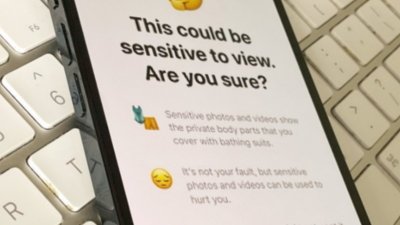
 Charles Martin
Charles Martin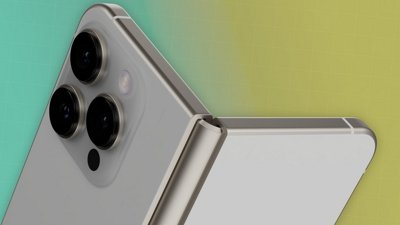


 Amber Neely
Amber Neely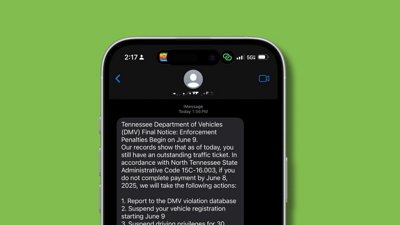
 Andrew Orr
Andrew Orr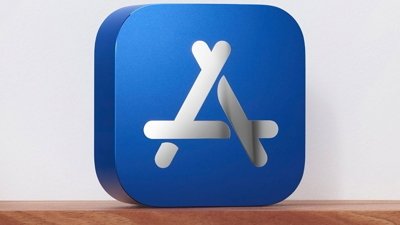
 William Gallagher
William Gallagher